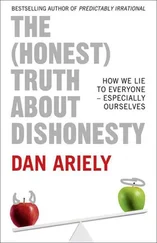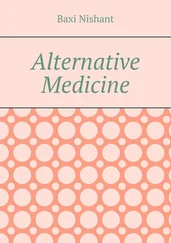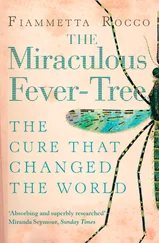Although Blane’s study was less rigorously controlled than Lind’s research, it did involve a much larger number of sailors and its results were arguably even more striking. During his first year in the West Indies there were 12,019 sailors in the British fleet, of whom only sixty died in combat and a further 1,518 died of disease, with scurvy accounting for the overwhelming majority of these deaths. However, after Blane introduced lemons into the diet, the mortality rate was cut in half. Later, limes were often used instead of lemons, which led to limeys as a slang term for British sailors and later for Brits in general.
Not only did Blane become convinced of the importance of fresh fruit, but fifteen years later he was able to implement scurvy prevention throughout the British fleet when he was appointed to the Sick and Hurt Board, which was responsible for determining naval medical procedures. On 5 March 1795 the Board and the Admiralty agreed that sailors’ lives would be saved if they were issued a daily ration of just three-quarters of an ounce of lemon juice. Lind had died just one year earlier, but his mission to rid British ships of scurvy had been ably completed by Blane.
The British had been tardy in adopting lemon therapy, as almost half a century had passed since Lind’s groundbreaking trial, but many other nations were even tardier. This gave Britain a huge advantage in terms of colonizing distant lands and winning sea battles with its European neighbours. For example, prior to the Battle of Trafalgar in 1805, Napoleon had planned to invade Britain, but he was prevented from doing so by a British naval blockade that trapped his ships in their home ports for several months. Bottling up the French fleet was possible only because the British ships supplied their crews with fruit, which meant that they did not have to interrupt their tour of duty to bring on board new healthy sailors to replace those that would have been dying from scurvy. Indeeed, it is no exaggeration to say that Lind’s invention of the clinical trial and Blane’s consequent promotion of lemons to treat scurvy saved the nation, because Napoleon’s army was much stronger than its British counterpart, so a failed blockade would probably have resulted in a successful French invasion.
The fate of a nation is of major historic importance, yet the application of the clinical trial would have even greater significance in the centuries ahead. Medical researchers would go on to use clinical trials routinely to decide which treatments worked and which were ineffective. In turn, this would allow doctors to save hundreds of millions of lives around the world because they would be able to cure diseases by confidently relying on proven medicines, rather than mistakenly advocating quack remedies.
Bloodletting, because of its central role in medicine, was one of the first treatments to be submitted to testing via the controlled clinical trial. In 1809, just a decade after Washington had undergone bloodletting on his deathbed, a Scottish military surgeon called Alexander Hamilton set out to determine whether or not it was advisable to bleed patients. Ideally, his clinical trial would have examined the impact of bloodletting on a single disease or symptom, such as gonorrhoea or fever, because the results tend to be clearer if a trial is focused on one treatment for one ailment. However, the trial took place while Hamilton was serving in the Peninsular War in Portugal, where battlefield conditions did not afford him the luxury of conducting an ideal trial — instead, he examined the impact of bloodletting on a broad range of conditions. To be fair to Hamilton, this was not such an unreasonable design for his trial, because at the time bloodletting was touted as a panacea — if physicians believed that bloodletting could cure every disease, then it could be argued that the trial should include patients with every disease.
Hamilton began his trial by dividing a sample of 366 soldiers with a variety of medical problems into three groups. The first two groups were treated by himself and a colleague (Mr Anderson) without resorting to bloodletting, whereas the third group was treated by an unnamed doctor who administered the usual treatment of employing a lancet to bleed his patients. The results of the trial were clear:
It had been so arranged, that this number was admitted, alternately, in such a manner that each of us had one third of the whole. The sick were indiscriminately received, and were attended as nearly as possible with the same care and accommodated with the same comforts…Neither Mr Anderson nor I ever once employed the lancet. He lost two, I four cases; whilst out of the other third thirty-five patients died.’
The death rate for patients treated with bloodletting was ten times greater than for those patients who avoided bloodletting. This was a damning indictment on drawing blood and a vivid demonstration that it caused death rather than saved lives. It would have been hard to argue with the trial’s conclusion, because it scored highly in terms of two of the main factors that determine the quality of a trial.
First, the trial was carefully controlled, which means that the separate groups of patients were treated similarly except for one particular factor, namely bloodletting. This allowed Hamilton to isolate the impact of bloodletting. Had the bloodletting group been kept in poorer conditions or given a different diet, then the higher death rate could have been attributed to environment or nutrition, but Hamilton had ensured that all the groups received the ‘same care’ and ‘same comforts’. Therefore bloodletting alone could be identified as being responsible for the higher death rate in the third group.
Second, Hamilton had tried to ensure that his trial was fair by guaranteeing that the groups that were being studied were on average as similar as possible. He achieved this by avoiding any systematic assignment of patients, such as deliberately steering elderly soldiers towards the bloodletting group, which would have biased the trial against bloodletting. Instead, Hamilton assigned patients to each group ‘alternately’ and ‘indiscriminately’, which today is known as randomizing the allocation of treatments in a trial. If the patients are randomly assigned to groups, then it can be assumed that the groups will be broadly similar in terms of any factor, such as age, income, gender or the severity of the illness, which might affect a patient’s outcome. Randomization even allows for unknown factors to be balanced equally across the groups. Fairness through randomization is particularly effective if the initial pool of participants is large. In this case, the number of participants (366 patients) was impressively large. Today medical researchers call this a randomized controlled trial (or RCT) or a randomized clinical trial , and it is considered the gold standard for putting therapies to the test.
Although Hamilton succeeded in conducting the first randomized clinical trial on the effects of bloodletting, he failed to publish his results. In fact, we know of Hamilton’s research only because his documents were rediscovered in 1987 among papers hidden in a trunk lodged with the Royal College of Physicians in Edinburgh. Failure to publish is a serious dereliction of duty for any medical researcher, because publication has two important consequences. First, it en courages others to replicate the research, which might either reveal errors in the original research or confirm the result. Second, publication is the best way to disseminate new research, so that others can apply what has been learned.
Lack of publication meant that Hamilton’s bloodletting trial had no impact on the widespread enthusiasm for the practice. Instead, it would take a few more years before other medical pioneers, such as the French doctor Pierre Louis, would conduct their own trials and confirm Hamilton’s conclusion. These results, which were properly published and disseminated, repeatedly showed that bloodletting was not a lifesaver, but rather it was a potential killer. In light of these findings, it seems highly likely that bloodletting was largely responsible for the death of George Washington.
Читать дальше











